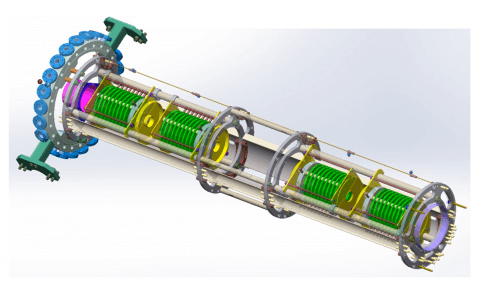Researchers from the Institute of Chemistry at the Hebrew University of Jerusalem, and from the Weizmann Institute of Science, have developed a new means that will allow researchers to closely examine the physics and chemistry of cold collisions between molecular ions with oppositely charged ions, with neutral atoms and with light. The new means will allow researchers to measure and characterize in the laboratory also important processes in astrochemistry

Over the years, ion traps (atoms or molecules with an electric charge) have become multi-purpose devices that have infiltrated many laboratories around the world. Ion trapping over time is required for accurate measurements of mass spectra, lifetimes, and dynamics of ion chemical processes. One of the most popular traps is a pigeon horn trap invented by Prof. Daniel Zeifman from the Weizmann Institute of Science. This trap is built similar to an optical resonator that contains a light beam between two mirrors at its ends. The ion beam trap, on the other hand, consists of electrostatic mirrors that capture ions of a certain charge and speed moving in the vacuum between the pair of mirrors.
Now, researchers from the Institute of Chemistry at the Hebrew University of Jerusalem have proposed an interesting upgrade to the trap based on the idea of dichroic mirrors, that is, mirrors that can reflect light of one color but transmit light of another color. In an ion trap, the new electrostatic mirror will return particles of a certain charge and energy but transfer particles of the opposite charge that can also be trapped between another pair of mirrors. In this way, it is possible to simultaneously capture ion beams with the opposite charge in the same device. Between the mirrors, the positive and negative charges will collide cold collisions in a controlled manner (at low energies) which will allow the execution of experiments.
The structure of the complex system these days at the Hebrew University of Jerusalem is described in the following video. The video begins when the blue ion enters the trap and is trapped between the internal mirrors. Now, if we inject the red (oppositely charged) ions, they will easily pass through the inner mirrors but will be reflected back from the outer mirrors. Between the mirrors, the ions trapped in the resonator can be externally manipulated and thus researchers can conduct experiments in cold collisions and in the analysis of various processes in ion chemistry.
The unique conditions in the trap make it possible to reproduce chemical processes in different environments and in particular the conditions existing in outer space, where, because of the low temperatures, the chemistry of molecular ions is of particular importance. Because electrostatic trapping is not limited by mass, the researchers hope to use this device to also analyze the chemistry resulting from the collisions of heavy biological molecules.
Prof. Daniel Strasser, a leading researcher from the Institute of Chemistry at the Hebrew University of Jerusalem, and co-author of the article, notes: "Every time we build a new experimental device, we discover new and surprising things about the way nature works. We are excited to explore and discover the mechanisms that govern the creation and breaking of chemical bonds under extreme conditions."
locate of Prof. Daniel Strasser

One response
They finally opened a trap for the pigeons that shit on my laundry. Where can I buy?